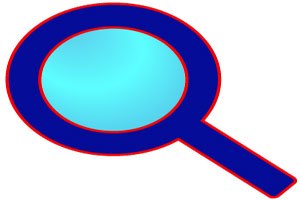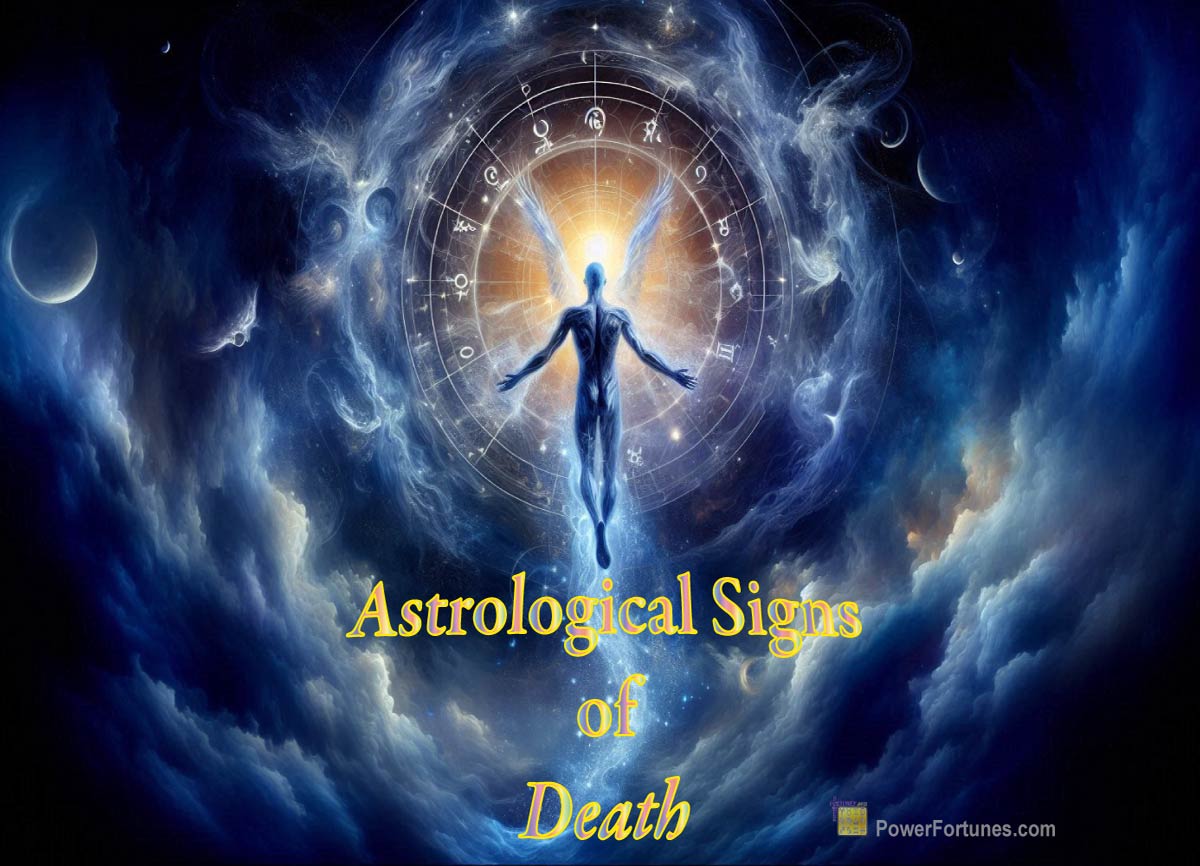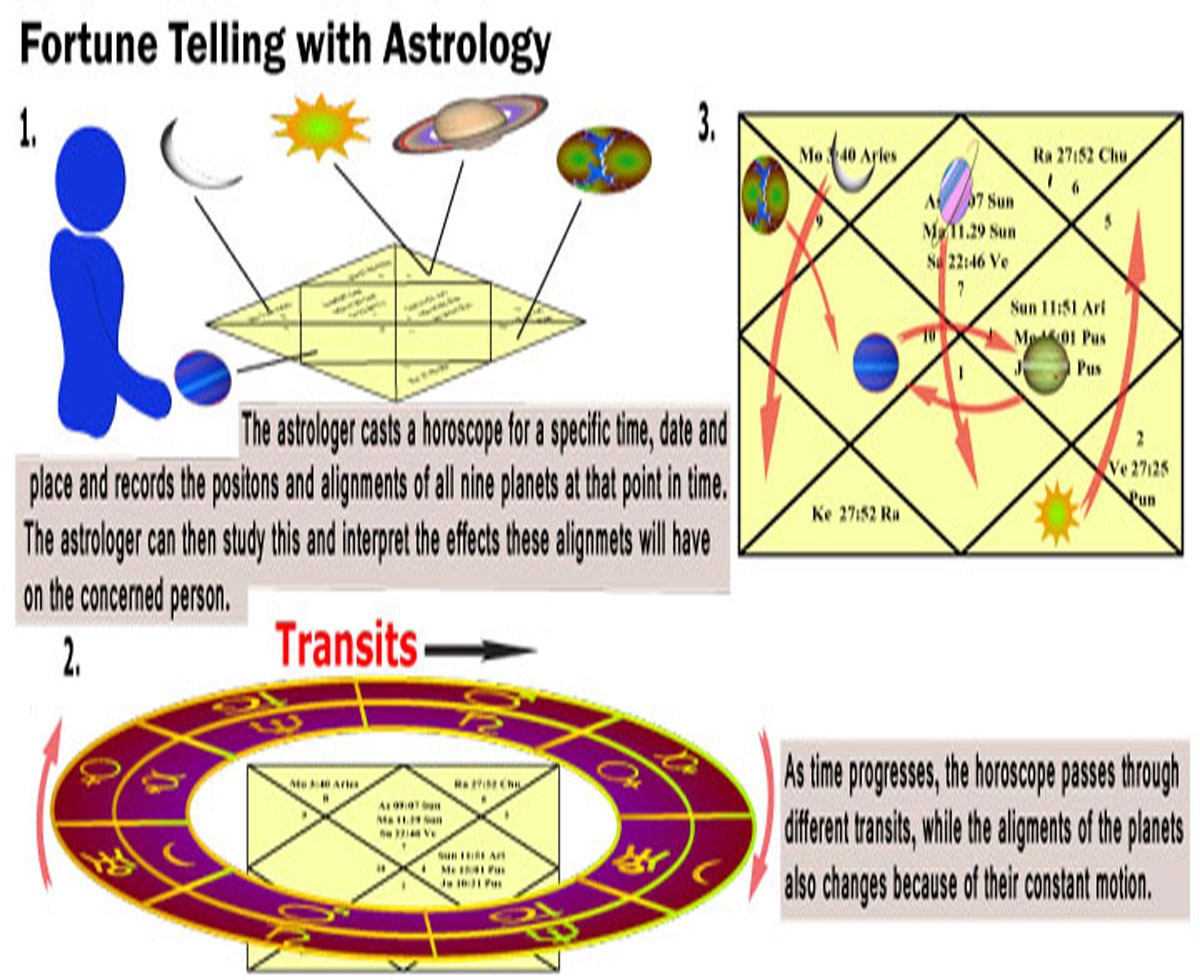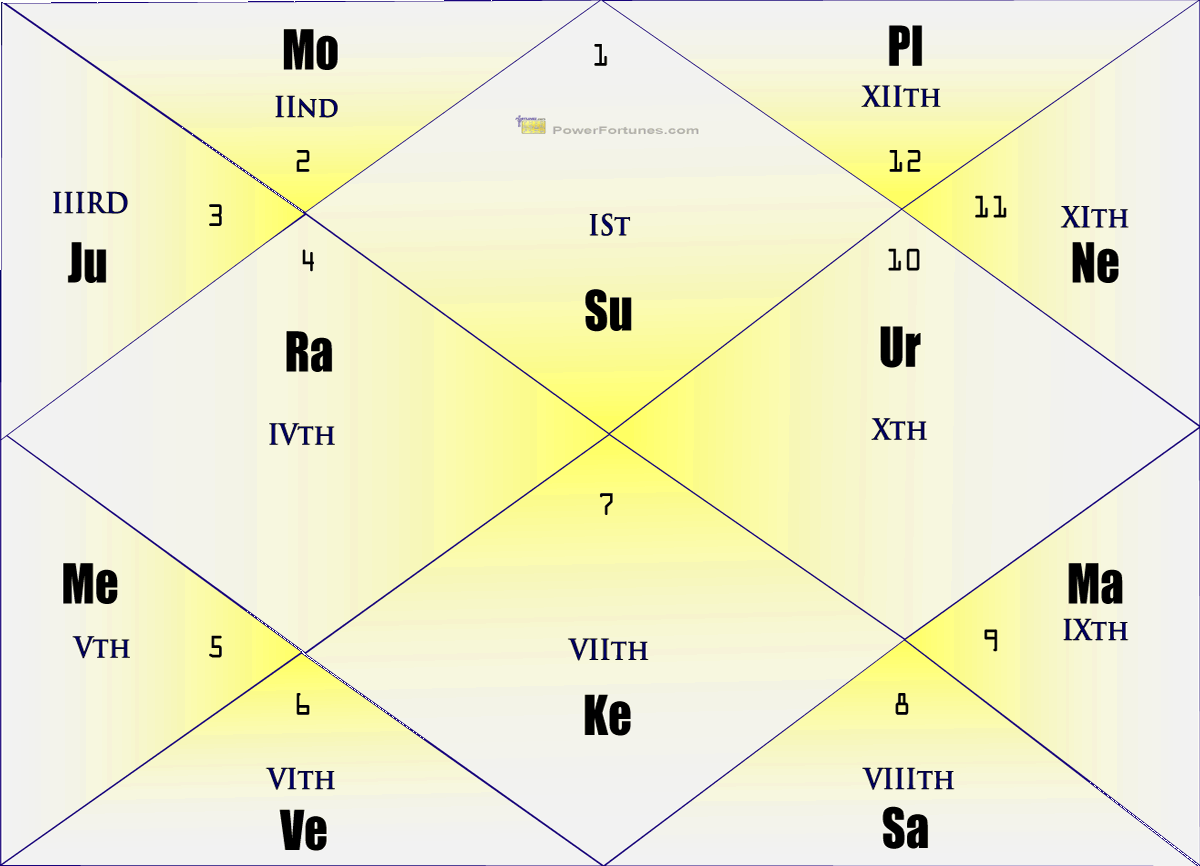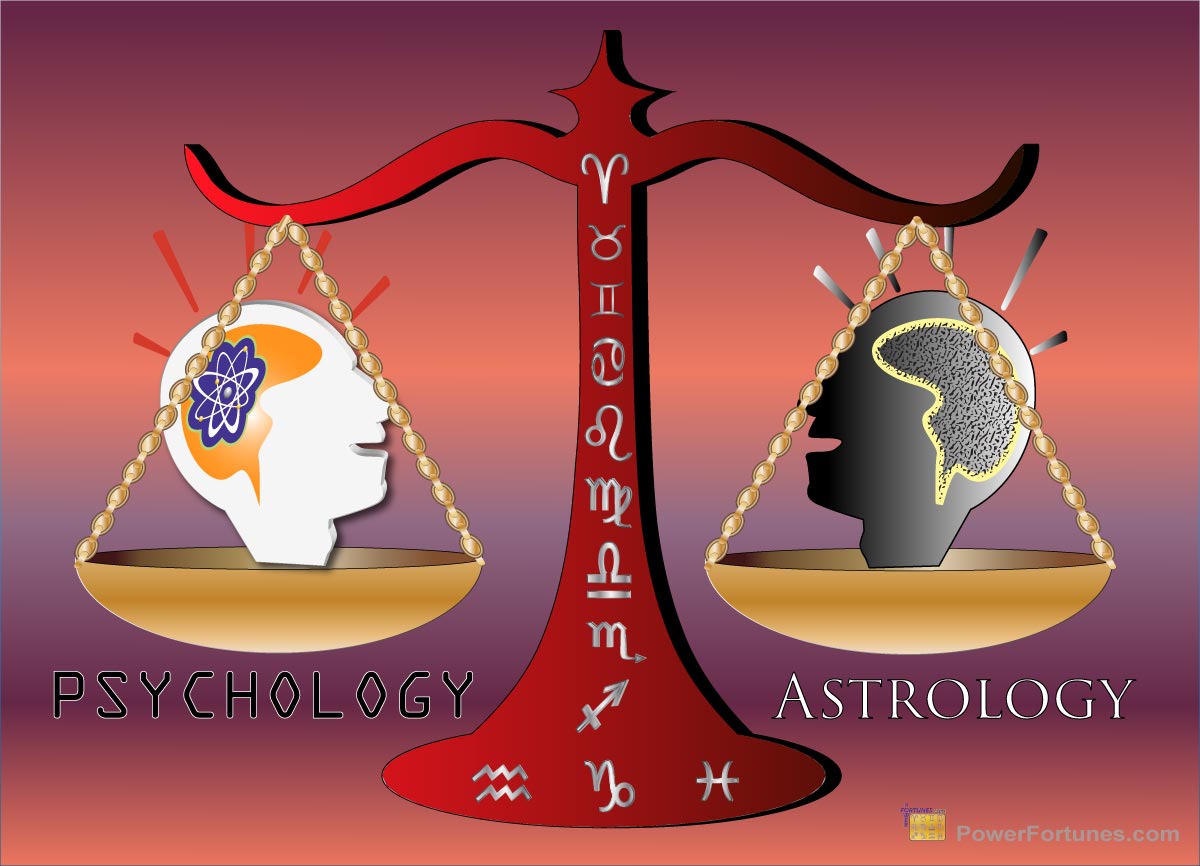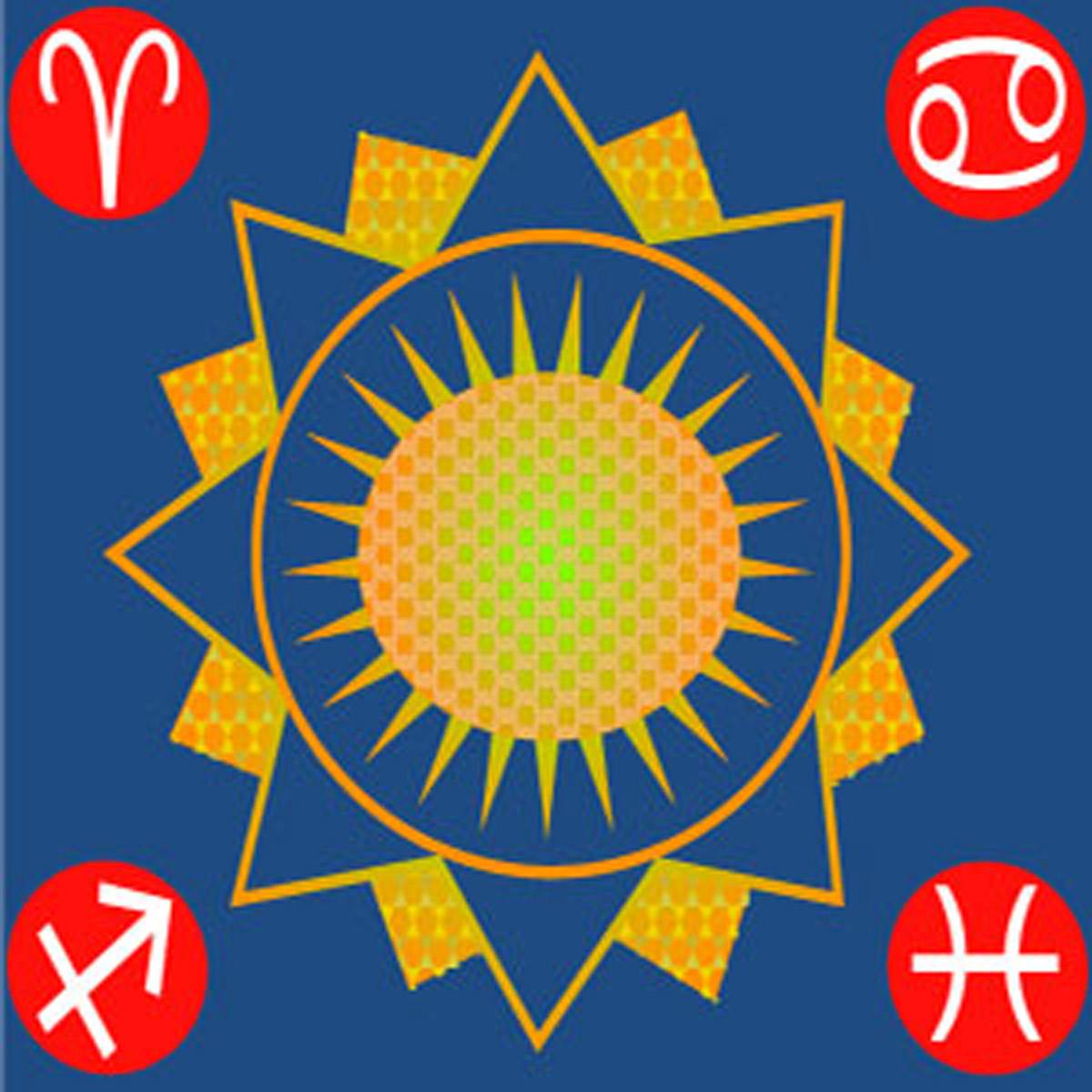
Astrologer often make use of specialised words, terms and phrases to describe specific astrological phenomena and conditions. Many of these words may differ from their ordinary dictionary meanings, or may not appear at all. These are the definitions of some commonly used, astrological terminology:
- Altitude: The elevation of a star or planet above the horizon, its vertical distance measured in degrees. The 'Horizon' being, 0° and the 'Zenith' being, 90°.
- Algol: This is a fixed star located in the constellation Perseus, at approximately 26° of Taurus. It represents the head of Medusa and is traditionally known as one of the most malevolent stars and has been associated with danger, violence and misfortune. It is for this reason that it is sometimes referred to as the 'Demon Star'. When present in a chart, it is believed that Algol can indicate murder, sudden death and even beheadings. Astronomically, Algol is a binary star system.
- Anaretic Degrees: When a planet reaches 29° to 30°, it has reached a critical phase of development as this is known as the 'Anaretic' degree. The Anaretic planet cannot be ignored when the it is activated by major predictive factors, such as transits and eclipses. Any attempt to ignore or delay results in serious frustration and failure. Planets at these degrees triggered by Saturn, Uranus, Neptune or Pluto indicate important 'Karmic' concerns.
- Angles: The angles are the first, fourth, seventh and tenth house cusps, the cardinal points of the zodiac. These points are considered the most sensitive points of the chart.
- Apex: The region in the constellation Hercules towards which the solar system is moving at about 12 miles per second.
- Aphelion: The point in a planet's orbit where it reaches maximum distance from the sun.
- Apogee: In astronomy, an apogee is considered to be the maximum distance of the centre of a moon or satellite, from the centre of the planet that it is orbiting. In astrology, the only satellite that is of relevance is the Moon as this is considered to be a planet. Hence the apogee or, 'Lunar Apogee' is the greatest distance between the centre of the Earth from that of the Moon.
- Ascendant: Also known as the First House Cusp, or Rising Sign, the Ascendant is the position of the Sun on the horizon at the minute of your birth. Astrologers consider it an even stronger psychological indicator of the personality, especially as it is perceived by others.
- Aspects: The relationships between the planets are measured by astrologers and if there is a connection between specific degrees, the planets are said to be 'In aspect' to one another. The relationship can be expressed positively or negatively, depending on the planets involved and the specific angles at which they connect.
- Betelgeuse: Is a bright red supergiant star in the constellation Orion. It is a powerful fixed star associated with honour, fame, wealth and success. Like many fixed stars, its influence can be dual, bringing both high achievements and sudden reversals if not well aspected.
- Conjunction: Conjunctions 'Blend' the energies of the two planets that occupy the same space within a separation of 8°.
- Combusted: A planet is considered 'Combusted' when it is located very close to the Sun in the sky. The closeness to the Sun causes the planet's energy to be weakened and obscured by the Sun's mass and powerful energy. As a result, the influence of such a planet is said to be diminished during this time and its positive qualities may be suppressed. The effects of combustion can vary depending on the planet involved and its placement in a particular horoscope chart.
- Co-ordinates: The geographical latitude and longitude of your place of birth. If you do not have this information, you can look it up in an atlas, or online at Wikimapia or Google Earth. Providing this information can be helpful, as it helps an astrologer to identify lesser known locations.
- Cusps: The space of one degree on either side between two houses or signs. People born "On the Cusp" are people born within a degree of the change between one sign to the next. They may strongly exhibit characteristics of both signs.
- Debilitated: When a planet is in the sign of its debilitation, it is said to be in its weakest and most unfavorable position. The energy of the planet may be suppressed or restricted and its effects may be less pronounced. For example, Jupiter is debilitated in Capricorn, which means that when Jupiter is placed in Capricorn, it may have a harder time expressing its positive qualities and may be weaker than usual.
- Direct: 'Direct' is the opposite of 'Retrograde' and refers to the apparent motion of a planet towards the Earth. When a planet is in direct motion, it appears to be moving forward in the sky from the perspective of Earth. This is the normal motion of the planet and it is believed to have its regular effects on the energies and influences associated with the planet. That is, a direct planet will have an otherwise normal influence.
- Divisional Chart: A 'Divisional Chart' is a Vedic technique used to further analyse an individual's birth chart. The birth chart, also known as the natal chart, is divided into twelve parts, each representing different areas of life. Each divisional chart, also called a 'Varg', focuses on a specific aspect of life, providing a more detailed analysis of the individual's horoscope. For example, the D-9 chart, also known as the 'Navamsa' chart, is used to study marriage and relationships, while the D-10 chart, also known as the 'Dasamsa' chart, is used to study career and professional life.
- Electional Astrology: Also referred to as event astrology, is a means of using the prevailing planetary positions for determine the timings of important life events, based on the most auspicious alignments to maximise success, and minimise obstacles.
- Elements: Each sign is related to one of the elements: Fire (Aries, Leo, Sagittarius), Earth (Taurus, Virgo, Capricorn), Air (Gemini, Libra, Aquarius) or Water (Cancer, Scorpio, Pisces).
- Equinox: 21 March, 21 September, when the days are equal night to day.
- Exalted: When a planet is in the sign of its exaltation, it is said to be in its strongest and most favorable position, and its energies are believed to be amplified. For example, Mars is exalted in Capricorn, which means that when Mars is placed in Capricorn, its qualities are enhanced and it is considered to be very powerful.
- Grand Square or Cross: A subset of the 90° Square aspect. Squares are one of the more challenging aspects. They indicate stressful interactions between the aspecting planets. A Grand Square or Grand Cross combines four such aspects in such a way that the four planets also form two oppositions in what looks like a 'Cross', while the planets form a 'Square' in the chart.
- Houses: Astrological houses are created by different methods (called House Systems). Every astrological chart has 12 different houses. Each house is related to a specific area of life or interest (for example the 1st house relates to sense of self, the 2nd house relates to money, and so on).
- Interceptions: Intercepted houses are those that have the same sign on both cusps. Planets in intercepted houses offer the greatest insight into a given incarnation because the resulting shift announces a lifetime of predictable karmic breakthrough. Intercepted planets do not begin to manifest their latent energy until they have progressed into a 'Free' sign.
- Lunation: The cycle of the Moon (full, waxing, waning, etc). The cycle of the Moon at birth gives the astrologer additional clues to the emotional and psychological make-up of the client.

